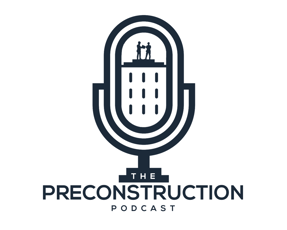3 Solutions to Common Preconstruction Challenges
Let’s be honest—working in preconstruction comes with more than its fair share of challenges. You juggle communication between project owners and subcontractors; you move data between multiple platforms, often having to stop to check and double-check work, and you pull long hours at the office. Sometimes it can feel like you’re the only one going through these challenges.
But believe it or not, there are hundreds and even thousands of estimators who share a lot of the same obstacles and concerns. We talked to several estimators from various backgrounds—ranging from general contractors to subs—to determine what some of the most common challenges are in preconstruction and the solutions to those preconstruction problems.
Accuracy of Available Data
The challenges:
1. Preconstruction teams often struggle to obtain clean, accurate data from the general contractors and project owners they collaborate with. One of the subcontractor representatives noted that the scope they are given to work with is often not as accurate as it should be and that they have to rely on data provided by the architects, which can result in having to make educated guesses and assumptions.
2. Other times, the issue lies in incorrectly assuming that a number will be lower than it actually is—for example, one person’s team learned that getting material delivered was much more expensive than they had projected it to be.
3. Lastly, many estimators talk about not being able to put together a collaborative site visit; often, even when there is a site visit, not everyone who needs to be there is allowed to come.
The solutions:
1. Make these requests a part of the contract.
By requiring site visits with everyone involved in the project, it is easier to be on the same page, which results in a much lower potential for errors.
2. Get concrete answers from GCs and project owners.
Some teams are successful when they put in RFIs for more clarity and added, “I think it’s this way, but can you confirm?” This requires a hard yes or no.
3. Make sure to loop in all necessary parties for site visits.
As the industry continues to evolve, the only way forward is to collaborate. And that doesn't just look like everyone using the same construction estimating software or being able to edit estimates in real-time—it also means being able to get on the ground as early as possible in order to have the best grasp of the project.
Owner Expectations
The challenge:
 It is important to have the project owner, architects, and general contractor all on the same page. (photo courtesy of Kaleidico)
It is important to have the project owner, architects, and general contractor all on the same page. (photo courtesy of Kaleidico)One of the greatest hurdles preconstruction teams have to overcome is making sure that the project owner, architects, and the general contractor are all on the same list of expectations. For example, it’s vital to the success of the project for everyone to understand when pricing needs to be finished, and to ensure that project owners have enough information and resources in order to build realistic expectations of timelines. Having meetings early on is one way to combat this issue, but many observed that they were often brought in after the architects, which put them behind. It is also sometimes difficult to get everyone to agree on a meeting and actually attend.
Additionally, estimators agreed that the emergence of prefab seems to be causing longer lead times. A representative from a prefab contractor said that it’s not always longer lead times. Rather pre-fab causes a lot more coordination between everyone involved in the project, and that plants are often booked out up to six months in advance, which can significantly delay a project.
The solutions:
1. Pay a lean consultant to plan and implement design schedules early on.
This creates a neutral referee who can point out value, as well as giving resiliency to the schedule. Everyone has ownership in the schedule, and thus there is more willingness to be held accountable. This also helps improve relational capital with subs, especially if there may only be a few involved.
2. Make sure you understand the culture of the people you collaborate with.
Whether you are a general contractor or a sub, it’s important to ensure that you are working with people that you truly want to work with. If values don’t align, it can be incredibly difficult to see eye-to-eye and to develop a cohesive vision that can be smoothly executed.
3. Ask the architect for a template model to see how they tag models.
This is important for preconstruction teams to make sure they are assigning the correct unit quantity costs.
Attracting and Retaining Talent
The challenge:
Attracting and retaining talent has been one of the longest-running preconstruction challenges. For starters, many people do not even know what preconstruction is or what being an estimator involves. It also doesn’t help that most graduates fresh out of school are looking to go into the field, not sit behind a desk for eight hours a day.
When preconstruction teams are able to retain talent, a new challenge frequently emerges. Many new grads don’t know how to read plans or contracts. In that same vein, most graduates from interior design and architecture schools often do not experience a lot of cross-information in their curriculums to learn what all really goes into a project from beginning to end.
The solutions:
1. Educate people about preconstruction.
Many graduates aren’t aware that new hires in preconstruction typically make more than architects who are 7-8 years out of school. Additionally, it’s important to make sure that there are preconstruction professionals sharing how their jobs help make an impact on the construction site.
2. Target the curriculum.
When preconstruction teams build relationships with universities, they have more of an opportunity to influence the curriculum and bring a wider perspective.
3. Encourage “cross-pollination.”
Some people suggested using the practice of design-build to encourage more collaboration and information sharing across disciplines, especially in university curriculums. It’s also important for industry professionals to see what other departments go through; for example, it would be helpful for the preconstruction team to attend weekly subcontractor meetings.















